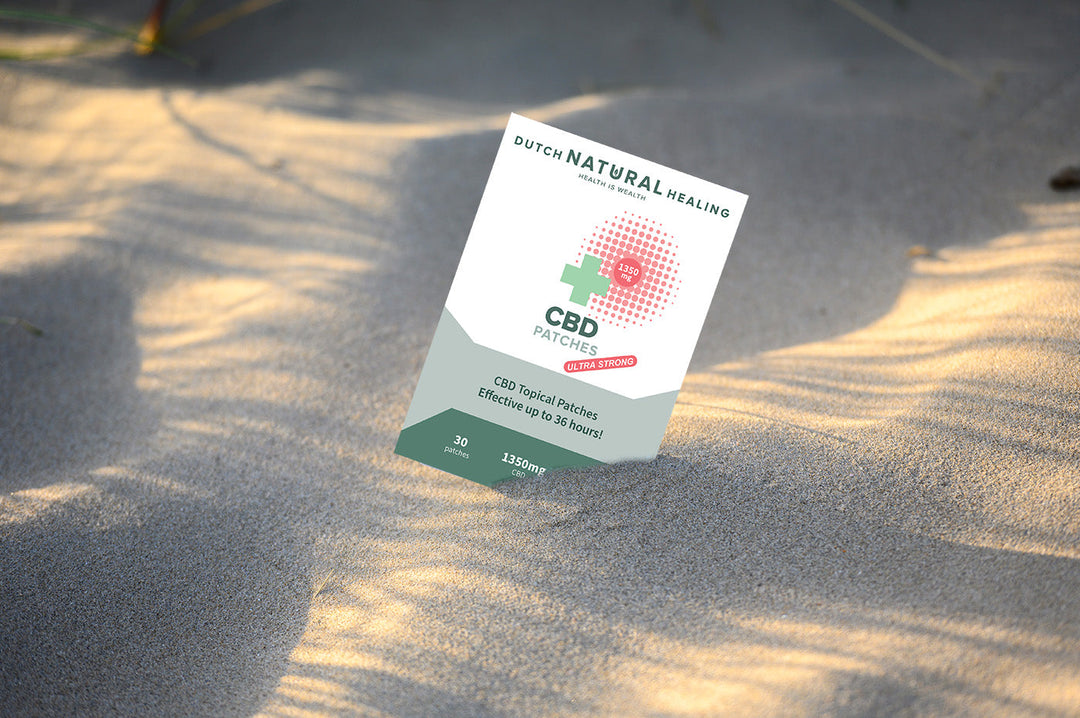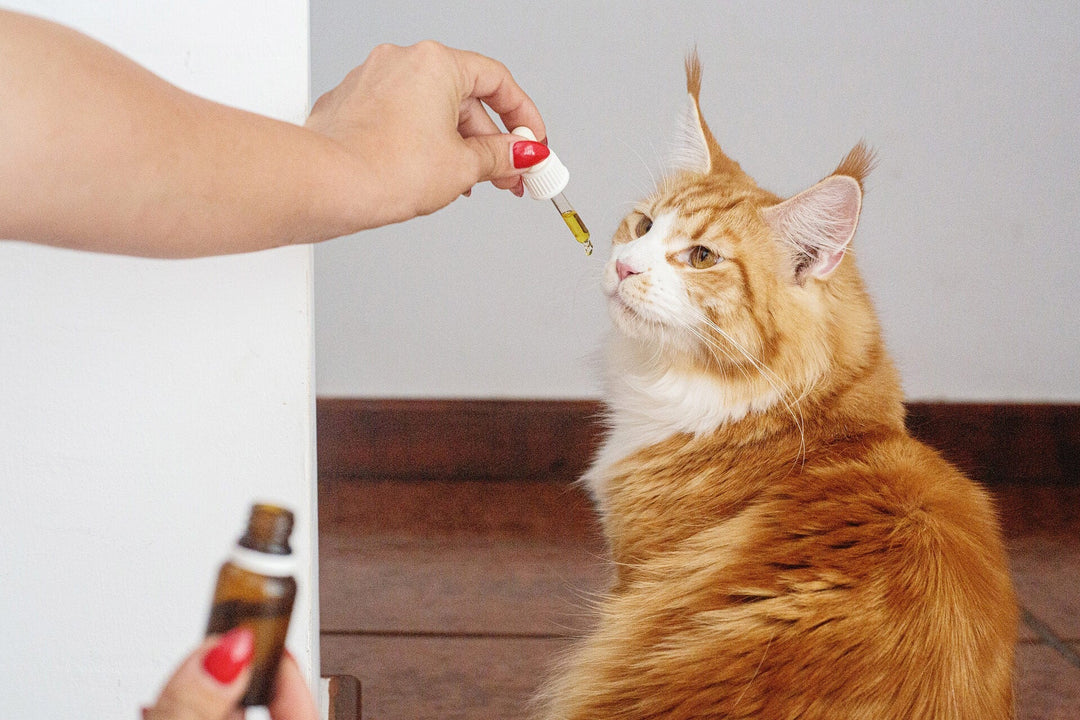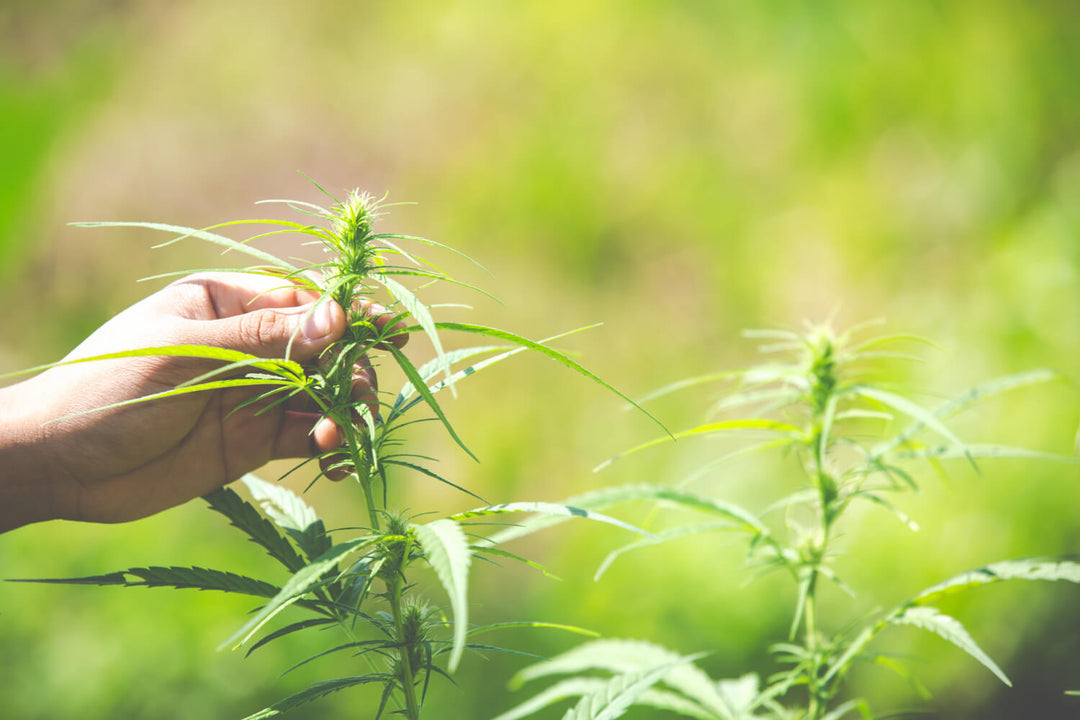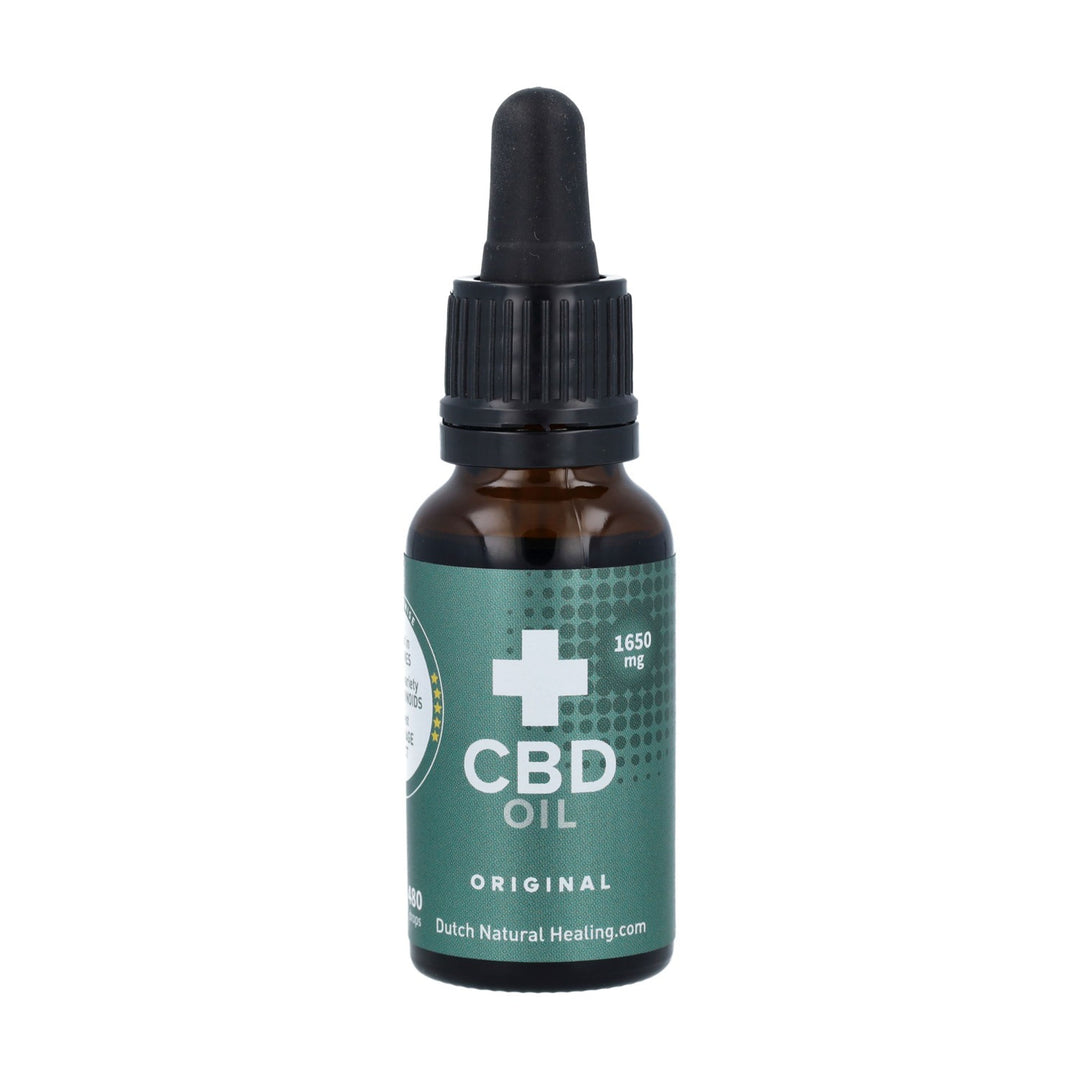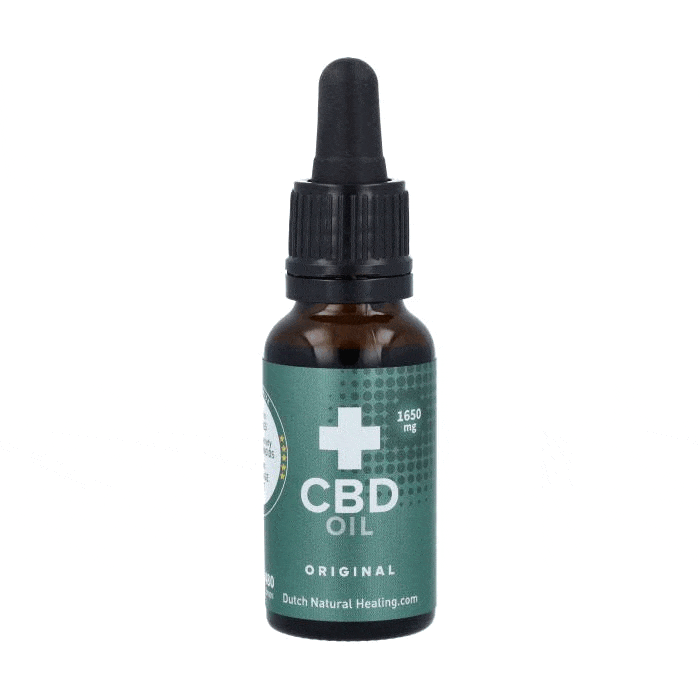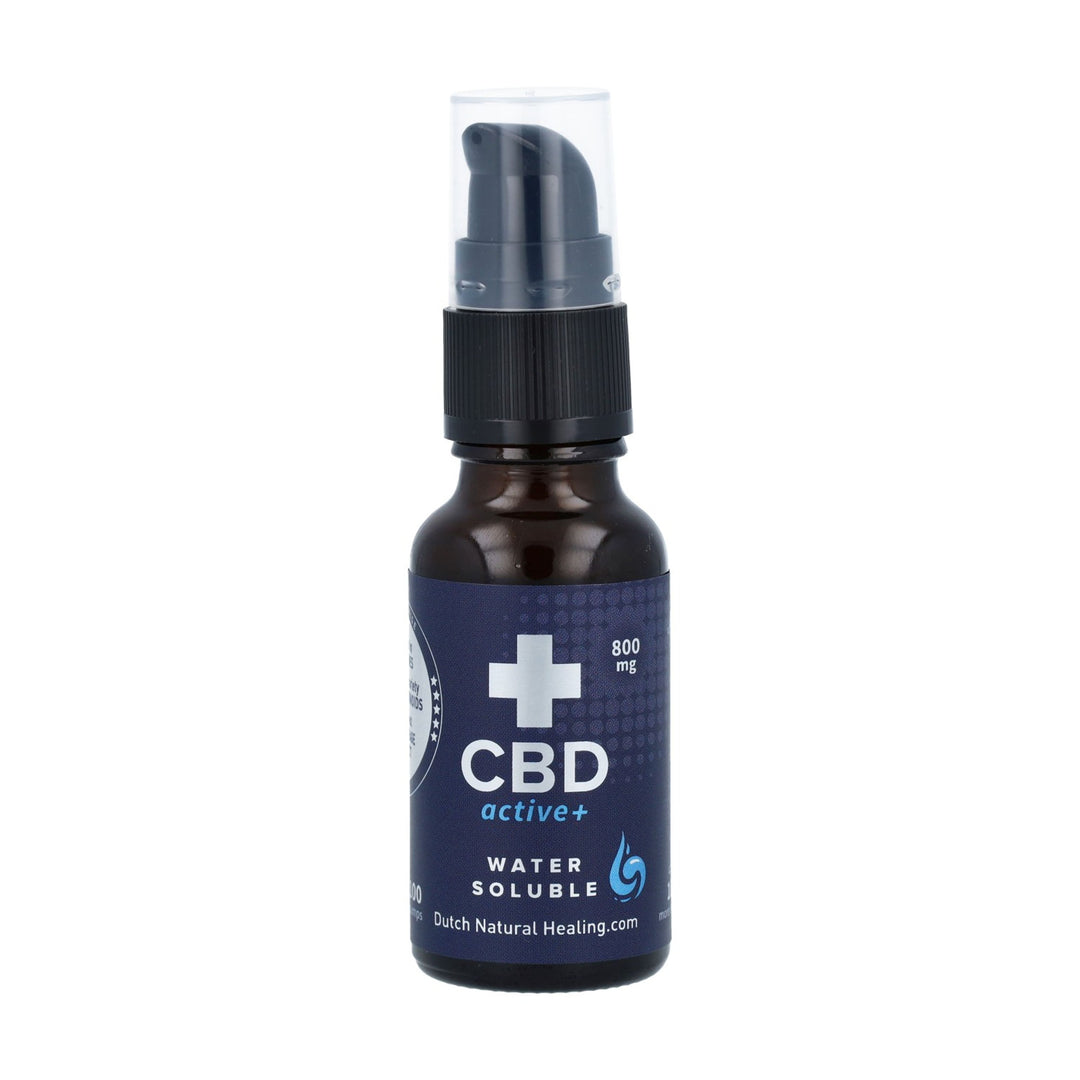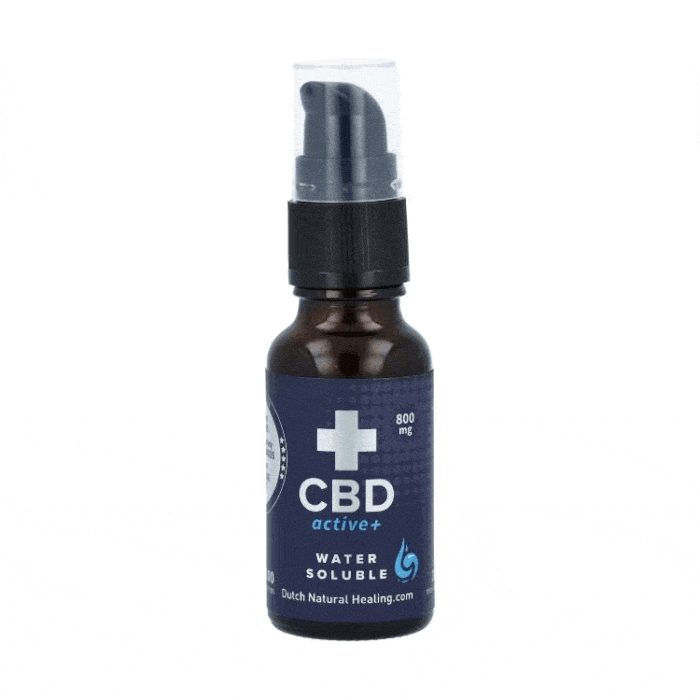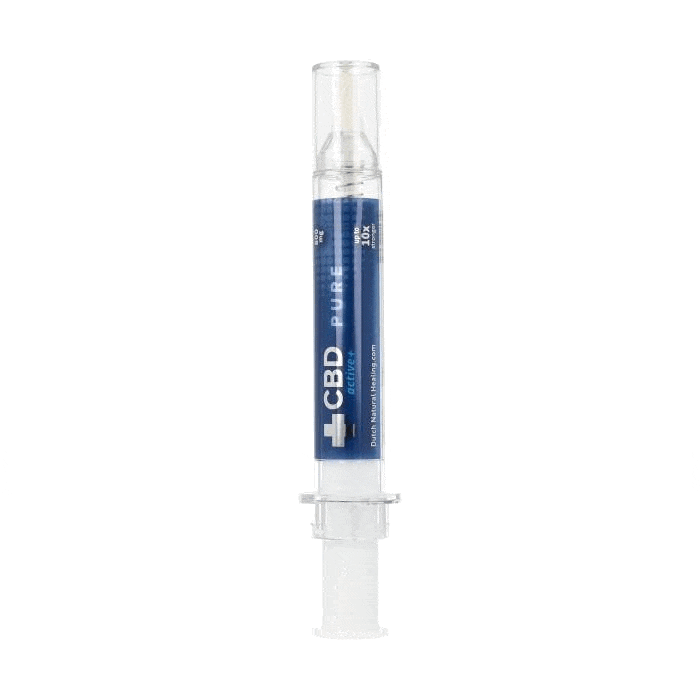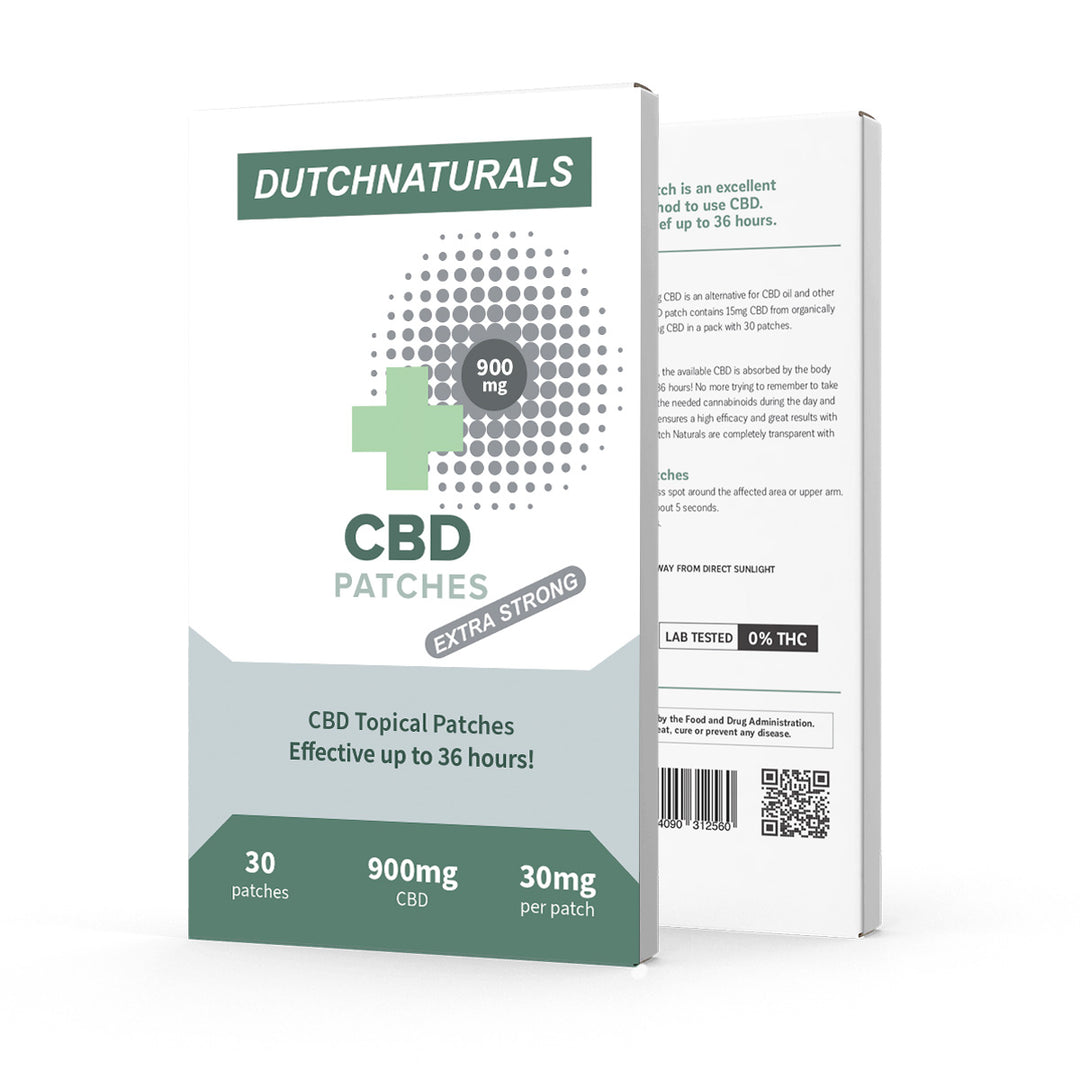More and more people are looking for natural solutions for pain relief, well-being or relaxation. In this quest, CBD patches are rapidly gaining popularity, and for good reason. At Dutch Natural Healing, we find that CBD patches have now become a regular part of many people's daily lives. The enthusiastic responses and practical tips from users not only encourage us, but also help others. In this blog, we take a closer look at exactly how the patches work and the advantages over other forms of administration.
What are CBD patches?
A CBD patch is a patch that works transdermally, i.e. through the skin. When you stick the patch on your skin, CBD is released into your bloodstream. The patch should be stuck on a clean and dry place, preferably where your skin is thinner such as the inside of your arm. Because the CBD from the patches is released gradually, it has a longer-lasting effect compared to other forms of administration.
How are CBD patches made?
CBD patches are produced using a special process. This process involves several steps:
-
Step 1: Making a thin film with CBD
First, the active ingredient, CBD, is dissolved in a solvent, such as a hydroalcoholic gel or another suitable liquid. This solution is then applied to a thin film. This film is dried to evaporate the solvent, leaving a solid layer of CBD. The film is then cut to the desired size, depending on the dose the patch should contain. -
Step 2: Application to an adhesive surface
The dried film containing CBD is applied to an adhesive surface. This substrate can be made of materials such as plastic, fabric or paper, and ensures that the patch sticks to the skin. The choice of material is important for both user comfort and mobility. -
Step 3: Cover with a protective layer
To prevent premature release of CBD, the patch is sealed with a protective cover, such as a peel-off layer. This layer is removed before the patch is applied to the skin, ensuring that the CBD is only released on contact with the skin.
How can CBD be absorbed through your skin?
The skin is the body's largest organ and acts as a natural barrier to keep unwanted substances out. The outer layer is the biggest challenge for transdermal absorption because it is a dense layer that blocks most substances. However, CBD can be absorbed through the skin thanks to specific mechanisms and technologies.
-
Skin structure and CBD interaction
Our skin consists of several layers: the epidermis (with the stratum corneum as the top layer), the dermis (dermis) and the subcutaneous fatty tissue (hypodermis). The stratum corneum is the most difficult to penetrate (1). CBD, which is lipophilic (fat-soluble), can penetrate this layer via lipophilic pathways. -
Transdermal technology
CBD patches use transdermal technology, whereby the patch slowly and consistently releases CBD. Once the patch is applied to the skin, the CBD is activated by the warmth of the skin and begins to 'move' through the skin layers. This happens through a process whereby particles move from an area with a higher number of particles to an area with a lower number of particles (concentration gradient). In this case, CBD moves from an area of high concentration (the patch) to an area of low concentration (the skin). -
Permeators
To improve absorption, many CBD patches contain permeators. These are substances that temporarily make the skin more permeable. These can be chemical solutions, but also physical methods, such as microneedles or nanobarriers. Some chemical permeators can accelerate and enhance the transdermal absorption of CBD (2). -
Penetration into the bloodstream
Once CBD passes the stratum corneum, it can reach the dermis layer, where blood vessels are present. Here, it is absorbed into the capillaries and introduced into the bloodstream. This process bypasses the liver, meaning less CBD is lost through the first-pass effect (3). This results in higher bioavailability compared to oral intake. -
Location and absorption rate
The area where the patch is applied can influence absorption. It is suggested that areas with thinner skin, such as the wrist or the inside of the arm, have less barrier function and therefore CBD can be absorbed better and faster.
Bioavailability
Bioavailability refers to how well CBD enters your bloodstream. When you ingest CBD oil, a large portion is lost in the liver due to the so-called “first-pass effect”.
Oral administration of CBD oil has a bioavailability of approximately 6-20%, depending on the method used: via sublingual administration (under the tongue), bioavailability is estimated at 13-19%, while for swallowed CBD oil it is only 6-12% (4).
This is different with patches. Because CBD enters the bloodstream directly through your skin, you bypass your liver. Studies show that patches with nanocarriers can improve absorption by a factor of 3 to 9 compared to oral intake (5). This means that you can use much more of the CBD in your body.
Effectiveness
As patches are a relatively new form of administration, not many studies have been conducted into their effectiveness. CBD patches are often used to treat pain and inflammation because they have a long-lasting effect (up to 48-70 hours, with peak release often occurring after 4 hours). Their effectiveness in treating pain is supported by studies, which showed that transdermal CBD reduced pain and inflammation (6).
A trial is also underway to investigate CBD patches for psoriasis, but the results are not yet available (7). However, there does appear to be great diversity in the quality of patches (8). Not every patch contains the right amount of CBD and there is variation in the amount of CBD released (8). That is why it is important to choose a reliable supplier. All in all, CBD patches seem a promising route of administration, including for localised complaints. I therefore expect research with CBD patches to increase considerably in the near future.
Conclusion
CBD patches have rapidly emerged as one of the most popular forms of CBD administration. The patches are praised for their fast action and long-lasting results, making them a favourite among both new and experienced CBD users. The combination of innovative technology, high absorption and ease of use makes CBD patches a great fit for an active lifestyle. Curious about the experiences of others or want to discover what CBD patches can do for you? Then take a look at the reviews on our website.
References
1. Kirk RD, Akanji T, Li H, Shen J, Allababidi S, Seeram NP, Bertin MJ, Ma H. Evaluations of Skin Permeability of Cannabidiol and Its Topical Formulations by Skin Membrane-Based Parallel Artificial Membrane Permeability Assay and Franz Cell Diffusion Assay. Med Cannabis Cannabinoids. 2022 Oct 10;5(1):129-137. doi: 10.1159/000526769. PMID: 36467778; PMCID: PMC9710319.
2. Mohammad Shajid Ashraf Junaid, Akeemat O. Tijani, Ashana Puri, Ajay K. Banga,
In vitro percutaneous absorption studies of cannabidiol using human skin: Exploring the effect of drug concentration, chemical enhancers, and essential oils, International Journal of Pharmaceutics, Volume 616, 2022, 121540, ISSN 0378-5173 https://doi.org/10.1016/j.ijpharm.2022.121540.
3. Mahmoudinoodezh H, Telukutla SR, Bhangu SK, Bachari A, Cavalieri F, Mantri N. The Transdermal Delivery of Therapeutic Cannabinoids. Pharmaceutics. 2022 Feb 18;14(2):438. doi: 10.3390/pharmaceutics14020438. PMID: 35214170; PMCID: PMC8876728.
4. Millar SA, Stone NL, Yates AS, O'Sullivan SE. A Systematic Review on the Pharmacokinetics of Cannabidiol in Humans. Front Pharmacol. 2018 Nov 26;9:1365. doi: 10.3389/fphar.2018.01365. PMID: 30534073; PMCID: PMC6275223.
5. Chu PC, Liao MH, Liu MG, Li CZ, Lai PS. Key Transdermal Patch Using Cannabidiol-Loaded Nanocarriers with Better Pharmacokinetics in vivo. Int J Nanomedicine. 2024 May 16;19:4321-4337. doi: 10.2147/IJN.S455032. PMID: 38770103; PMCID: PMC11104392.
6. Hammell DC, Zhang LP, Ma F, Abshire SM, McIlwrath SL, Stinchcomb AL, Westlund KN. Transdermal cannabidiol reduces inflammation and pain-related behaviours in a rat model of arthritis. Eur J Pain. 2016 Jul;20(6):936-48. doi: 10.1002/ejp.818. Epub 2015 Oct 30. PMID: 26517407; PMCID: PMC4851925.
7. Sermsaksasithorn P, Asawanonda P, Phutrakool P, Ondee T, Chariyavilaskul P, Payungporn S, Pongpirul K, Hirankarn N. Efficacy and Safety of Cannabis Transdermal Patch for Alleviating Psoriasis Symptoms: Protocol for a Randomized Controlled Trial (CanPatch). Med Cannabis Cannabinoids. 2024 May 30;7(1):99-110. doi: 10.1159/000539492. PMID: 39015605; PMCID: PMC11249749.
8. Yu L, Madsen FB, Eriksen SH, Andersen AJC, Skov AL. A reliable quantitative method for determining CBD content and release from transdermal patches in Franz cells. Phytochem Anal. 2022 Dec;33(8):1257-1265. doi: 10.1002/pca.3188. Epub 2022 Nov 13. PMID: 36372393; PMCID: PMC10100468.

